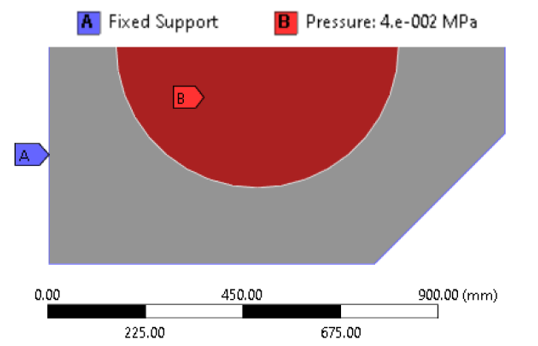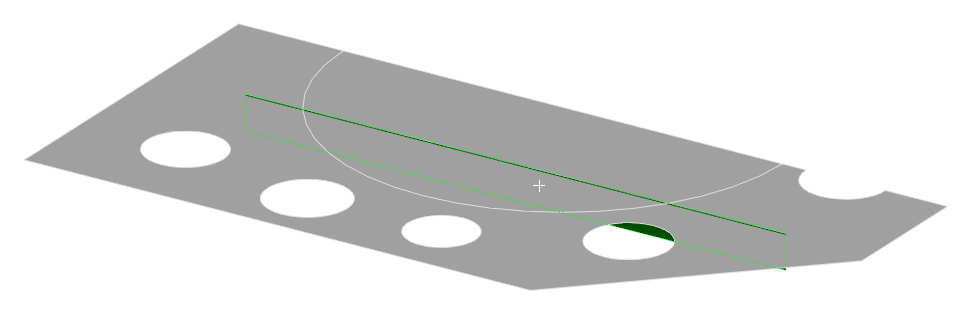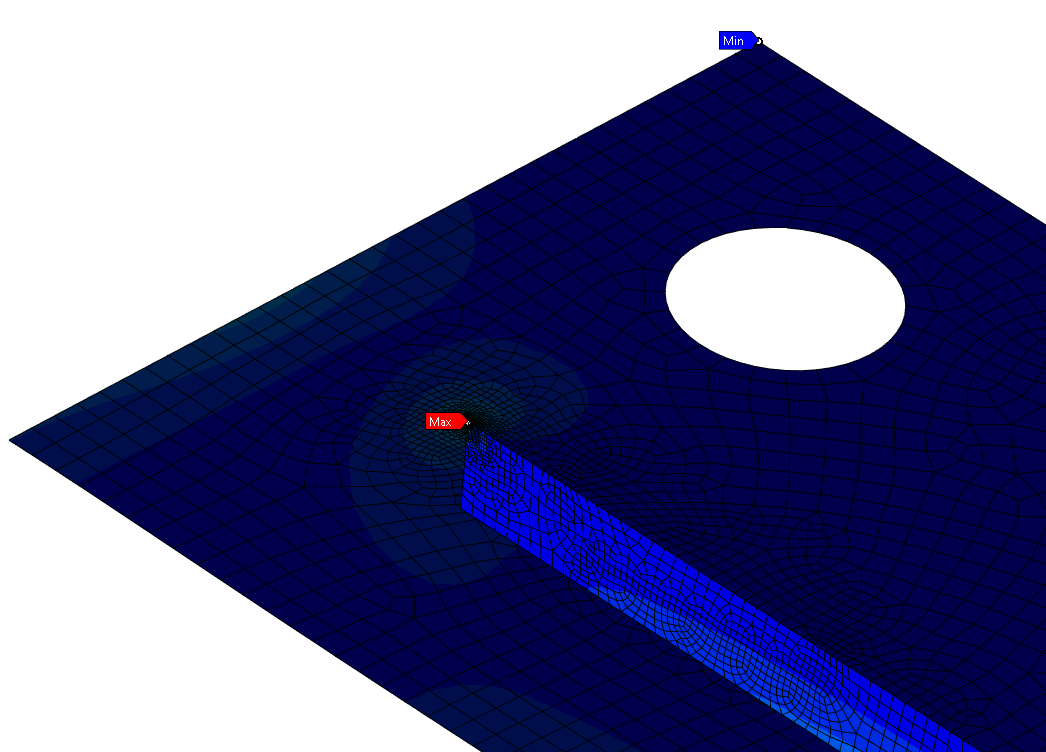-
-
March 22, 2023 at 6:47 pm
Daniel Jordan
SubscriberHi all!
I'm currently working through a university project that requires us to analyse a thin plate (SHELL281 elements) fixed at its edges with a pressure applied on the plate:
(Note that a symmetry has been applied on the longest edge in the diagram shown above)
We are performing linear analysis (elastic material) with large deflections. The latter stages of the project require us to:
1. Add simple stiffeners to the underside of the plate
2. Add circular cutouts in the plate's face.
The aim is to minimise deflection (hence the stiffeners) while also minimising weight (hence the holes), all while ensuring max equivelant stress doesn't exceed a certain amount. The best optimisation strategy would therefore be to parametrise the position and sizing of the stiffeners and holes and apply upper bounds to the max stress and deflection. The problem that we're running into, however, is that the stiffeners cause stress singularities.This means that targeting the maximum stress during optimisation is no longer possible, as the singularity 'steals' the maximum stress reading in the Mechanical solution. We also can't manually add a stress probe at a position and make the optimisation target that reading, because the changing geometry of the stiffener and the holes will shift the 'true' value of maximum stress to different locations for each run.
What we are looking for is a way to make Mechanical ignore the area surrounding the stress singularities, so that the maximum stress probe, which is capable of automatically moving itself each run, can be used as a target for our optimisation to make sure stress doesn't exceed a certain amount. Please note that identifying stress singularities and mitigating their effects is a component of this project, so we cannot remove the singularity from the model by, for example, adding a fillet.
Thank you very much for any insight people can provide. -
March 23, 2023 at 6:48 am
Erik Kostson
Ansys EmployeeHi
I would share the geometry in order not to have contacts there (stiffener and plate), and so to have shared nodes and a compatible mesh between them (stiffener and plate).Finally if it is still there try to put a reasonable fillet on those 90 degree corners between stiffener and plate.
Also use a regular mesh as shown below.https://www.engineering.com/story/fea-simulation-how-to-use-shell-element-results-to-improve-design
See our getting started course and if there is any meshing on that.
All the best
Erik-
March 23, 2023 at 10:53 am
Daniel Jordan
SubscriberHi Erik, thank you for the quick response.
I should have mentioned that the geometry is already shared (as far as I understand it, anyway; both the plate and stiffener are already combined as one part with two bodies and have shared nodes at the point they meet). We've also been strongly advised against adding fillets as we're aiming to defeature the part as much as possible. Do you know if there is any other way of mitigating the influence of the stress singularity such that we can perform an optimisation that targets minimal stress? Thank you.
-
-
- The topic ‘Parametrising maximum stress values in the presence of a stress singularity’ is closed to new replies.



-
1997
-
897
-
599
-
591
-
418

© 2025 Copyright ANSYS, Inc. All rights reserved.






